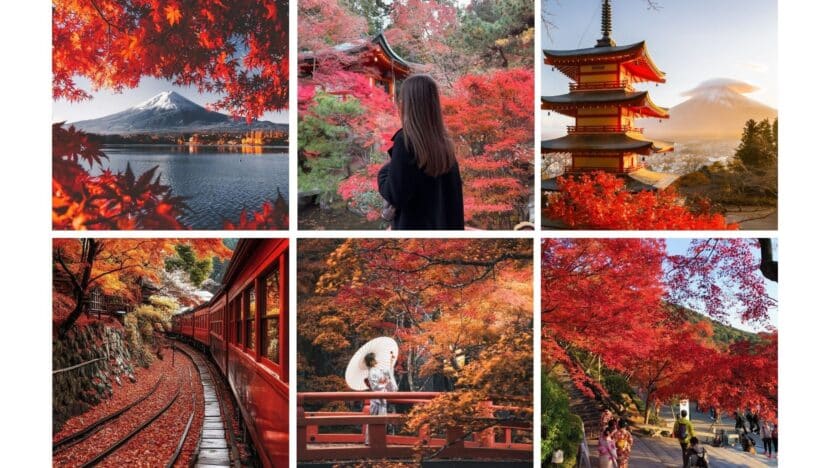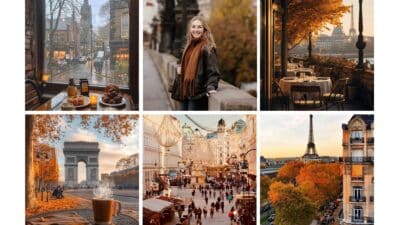Alright, picture this: the gentle chill of autumn air, a sky that’s a perfect shade of crisp blue, and all around you, a symphony of fiery reds, brilliant oranges, and sunny yellows. No, we’re not talking about a painting; we’re talking about Japan when koyo – the autumn leaves – are at their peak. And if you’re specifically thinking about those iconic, vibrant maple leaves, you’re chasing momiji. Forget the cherry blossoms for a moment; Japan in autumn is a whole different kind of magic, a dazzling display that can honestly make you gasp.
For centuries, the Japanese have celebrated this seasonal transformation with the same reverence and enthusiasm they show for spring’s sakura. It’s a time for quiet contemplation, outdoor adventures, and, of course, lively festivals that showcase the beauty of the season. This isn’t just about leaves changing color; it’s about a cultural phenomenon, a transient spectacle that invites you to slow down, breathe it all in, and maybe even find a little peace amidst the breathtaking scenery. If you’re dreaming of a trip filled with stunning natural beauty, delicious seasonal treats, and a uniquely Japanese charm, then “Chasing Crimson: Your Casual Guide to Japan’s Autumn Maple Festivals” is exactly what you need to navigate this unforgettable experience. We’re going to dive deep into what makes autumn in Japan so special, where to go, what to do, and how to make the most of your crimson quest.
Understanding Koyo: More Than Just Leaves
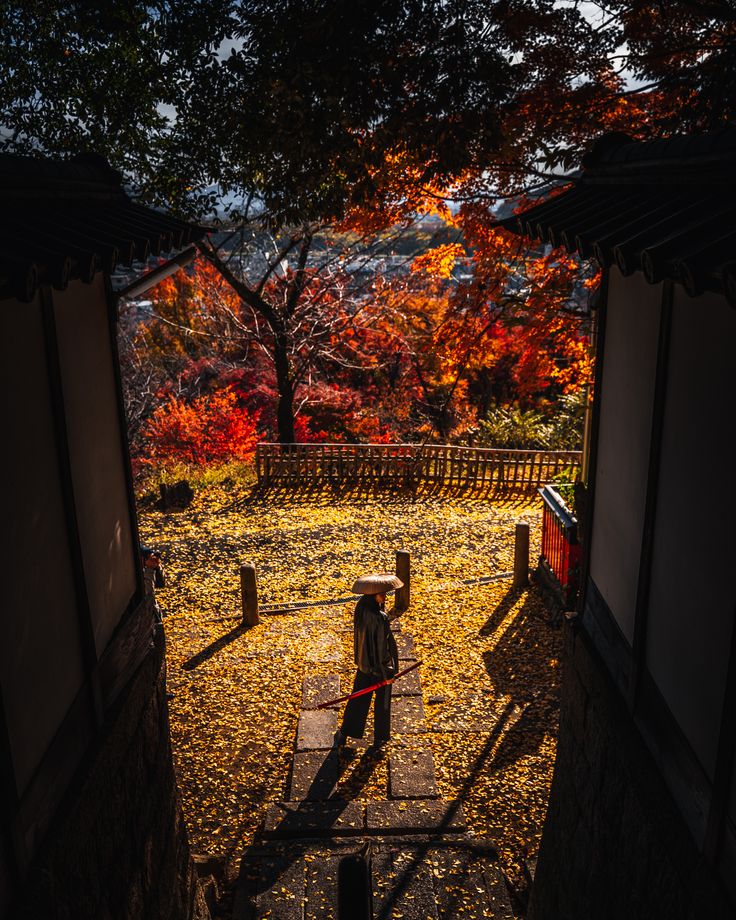
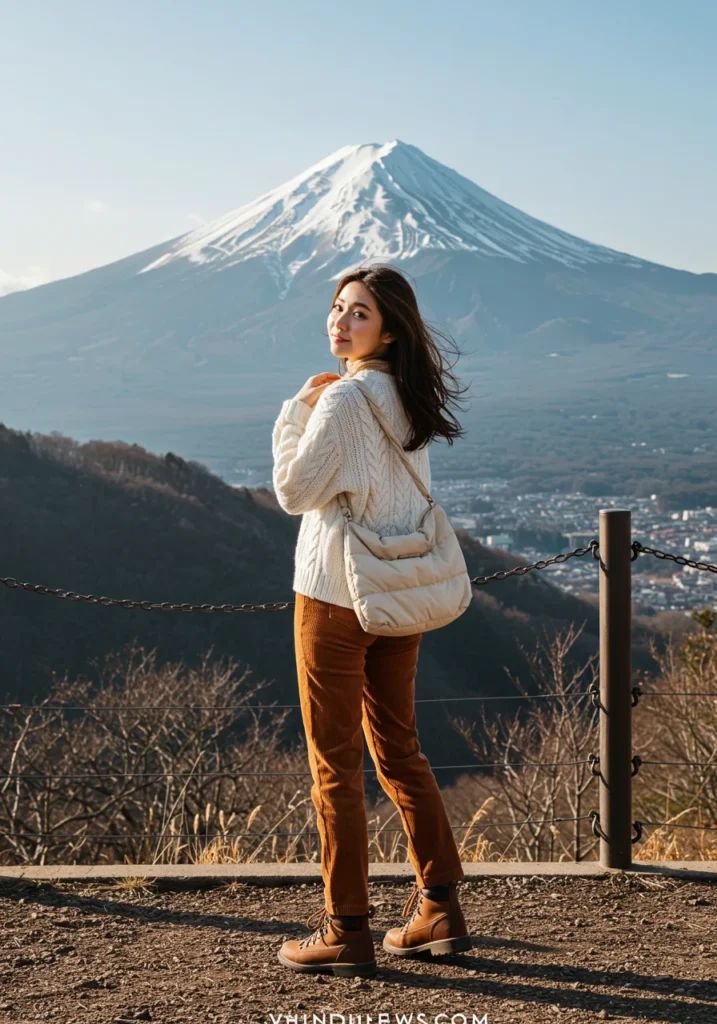
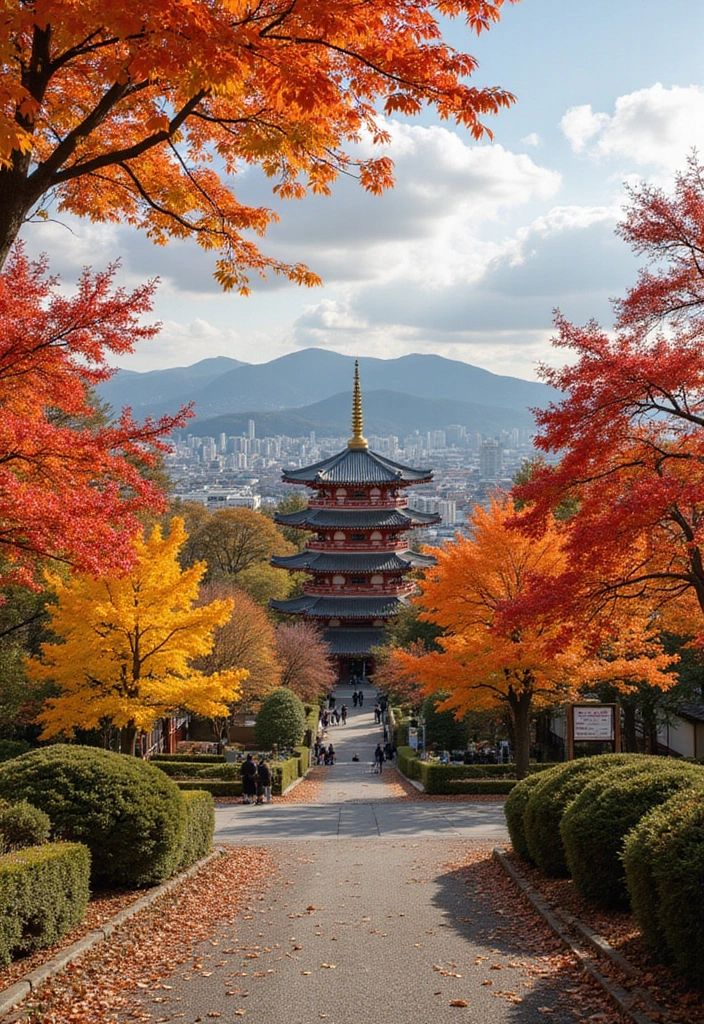
So, what exactly is koyo? Simply put, it translates to “red leaves” or “autumn leaves,” but it encompasses so much more than just a literal description. It’s an aesthetic appreciation for the fleeting beauty of nature, much like hanami (flower viewing) in spring. While cherry blossoms symbolize new beginnings and the ephemeral nature of life, koyo evokes a sense of vibrant maturity, a last magnificent flourish before winter’s quietude. It’s a time when mountainsides ignite, temple gardens glow, and city parks transform into palettes of incredible color.
The Japanese have a deep, spiritual connection to nature, and koyo season is a prime example. Poets have penned verses about it for centuries, artists have painted its splendor, and it’s woven into the fabric of daily life through seasonal foods, decorations, and traditions. While many trees contribute to the autumn tapestry – ginkgo with its brilliant golds, zelkovas, and sumacs – it’s the momiji (Japanese maple) that often steals the show. Their delicate, star-shaped leaves turn an astonishing array of colors, from deep burgundy and fiery red to bright orange and even purple, creating an effect that feels almost otherworldly.
Why are maples so special? Beyond their stunning visual appeal, momiji hold cultural significance. They are often seen as symbols of beauty, grace, and change. Walking through a momiji grove during peak season is an experience that engages all the senses: the visual feast, the crisp scent of fallen leaves, the gentle rustle underfoot. It’s a moment of profound connection with nature, a chance to pause and appreciate the simple yet powerful artistry of the natural world.
The timing for koyo is crucial, and it’s not a single, nationwide event. The “koyo front” sweeps down the archipelago from north to south, much like the cherry blossom front in reverse. It typically begins in Hokkaido around late September, reaching its peak in the northern regions by mid-October. Central and southern Japan, including popular spots like Tokyo and Kyoto, usually see their best colors from mid-November to early December. This extended period means that no matter when you manage to visit within the autumn months, there’s a good chance you can catch some spectacular views somewhere in the country. Planning your trip around these general timings will be key to maximizing your crimson quest!
The Anatomy of a Maple Festival
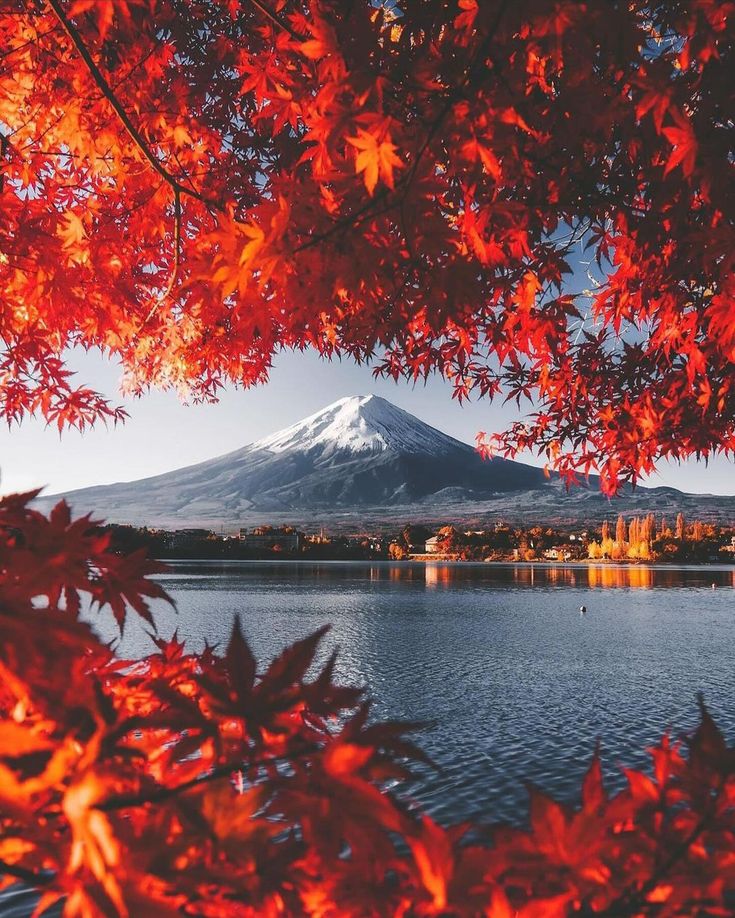
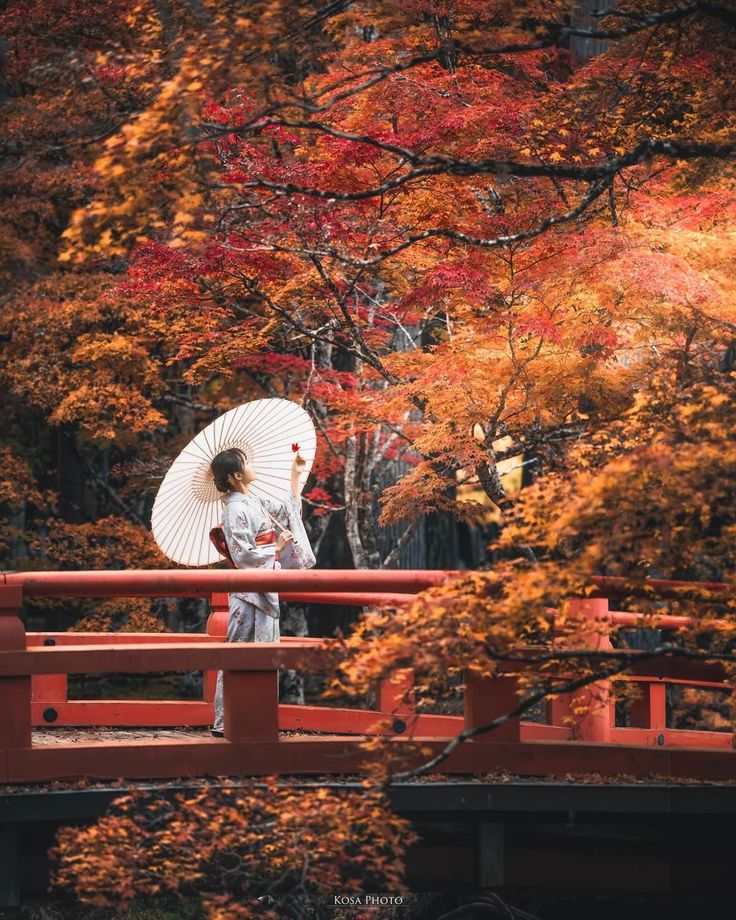
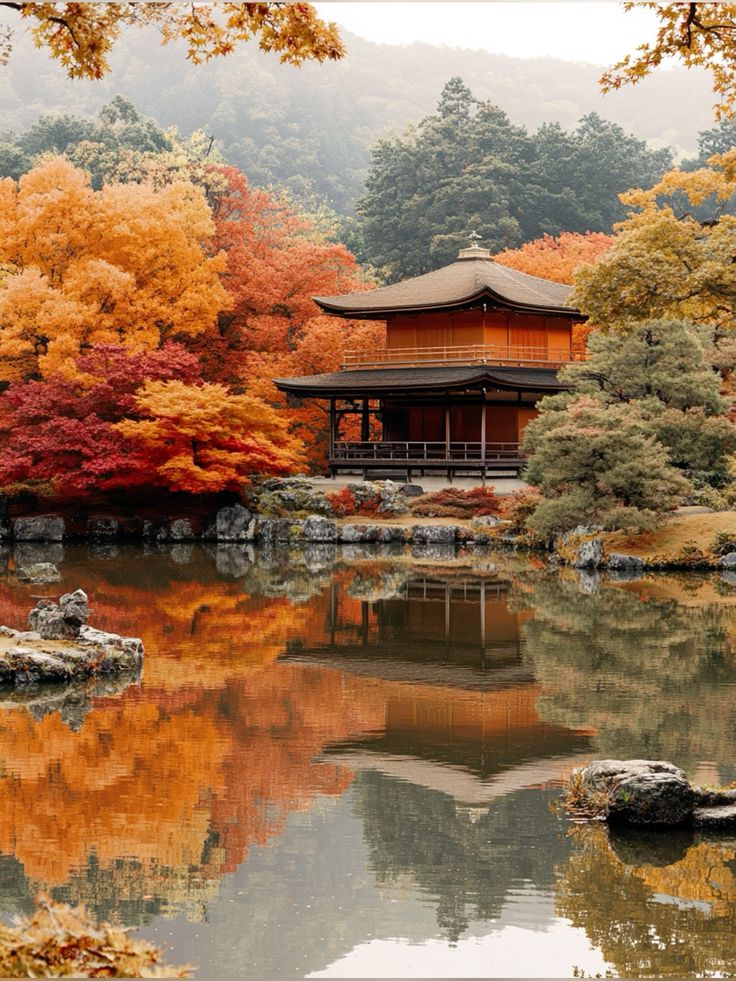
While simply wandering through a park or temple garden to admire the leaves is a fantastic experience in itself, Japan elevates koyo viewing with dedicated festivals. These autumn maple festivals are vibrant, often family-friendly affairs that blend natural beauty with cultural celebration. What can you expect when you stumble upon (or purposefully seek out) one of these delightful gatherings?
First and foremost, prepare your taste buds! Food stalls, known as yatai, are an integral part of any Japanese festival. During autumn, these stalls will be brimming with seasonal delights that complement the cool weather. Imagine savoring a warm yakimo (roasted sweet potato) – its natural sweetness a perfect counterpoint to the crisp air – or indulging in kuri (chestnuts), either roasted or incorporated into desserts. Then there’s momiji manju, a maple leaf-shaped cake often filled with sweet red bean paste, sometimes even deep-fried for an extra treat. You’ll also find festival staples like takoyaki (octopus balls), yakisoba (fried noodles), and various skewers. It’s a culinary journey that adds another layer of enjoyment to your leaf-peeping adventure.
Beyond the food, these festivals often feature traditional performances that immerse you in local culture. You might catch a kagura dance, a sacred Shinto ritual performance, or be captivated by the powerful rhythms of taiko drumming. Local musicians, folk dancers, and even historical reenactments sometimes take center stage, offering a glimpse into Japan’s rich heritage against the stunning backdrop of autumn foliage. These performances add a dynamic energy to the serene beauty of the changing leaves, creating a unique juxtaposition.
Many festivals also host local craftspeople and vendors selling unique products. You could find exquisite handmade pottery, textiles dyed with natural autumn colors, or intricate wooden carvings. It’s a fantastic opportunity to pick up authentic souvenirs that capture the essence of your trip, often directly from the artisans themselves. Local agricultural products, especially seasonal fruits and vegetables, might also be on offer, providing a true taste of the region.
One of the most magical aspects of autumn maple festivals, especially in popular viewing spots, is the evening illuminations. As dusk falls, floodlights are strategically placed to light up the momiji from below, transforming the daytime spectacle into an ethereal, glowing wonderland. Temples and gardens that are beautiful by day become dramatically different after dark, with the crimson leaves appearing to shimmer and dance against the night sky. Walking through these illuminated gardens is a truly enchanting experience, offering a completely different perspective on the autumn colors and creating lasting memories. Think of it as the autumn equivalent of yozakura (night cherry blossom viewing), but with fiery reds and oranges.
Top Regions for Chasing Crimson
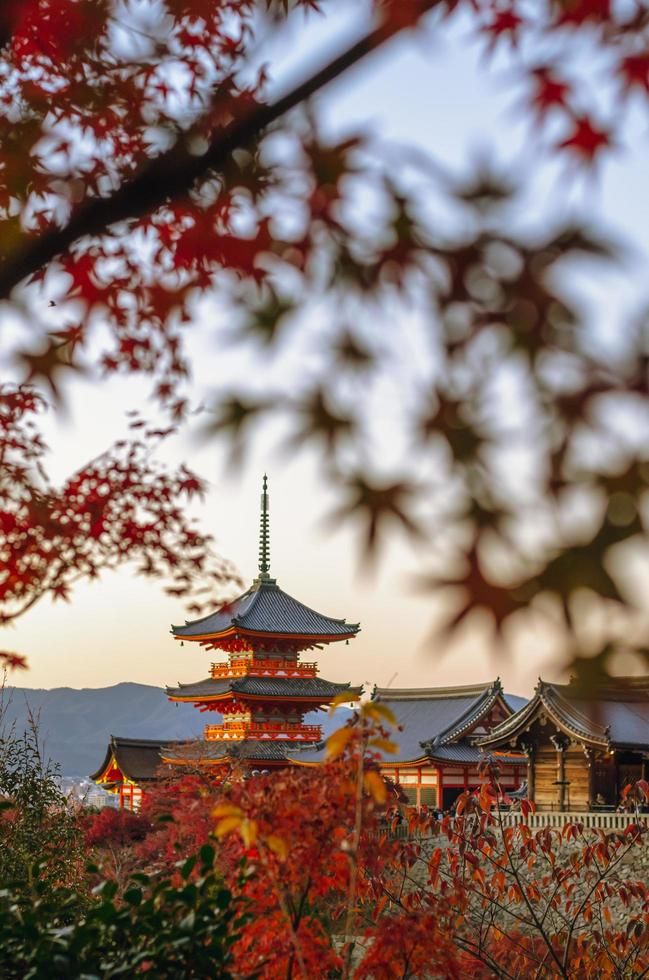
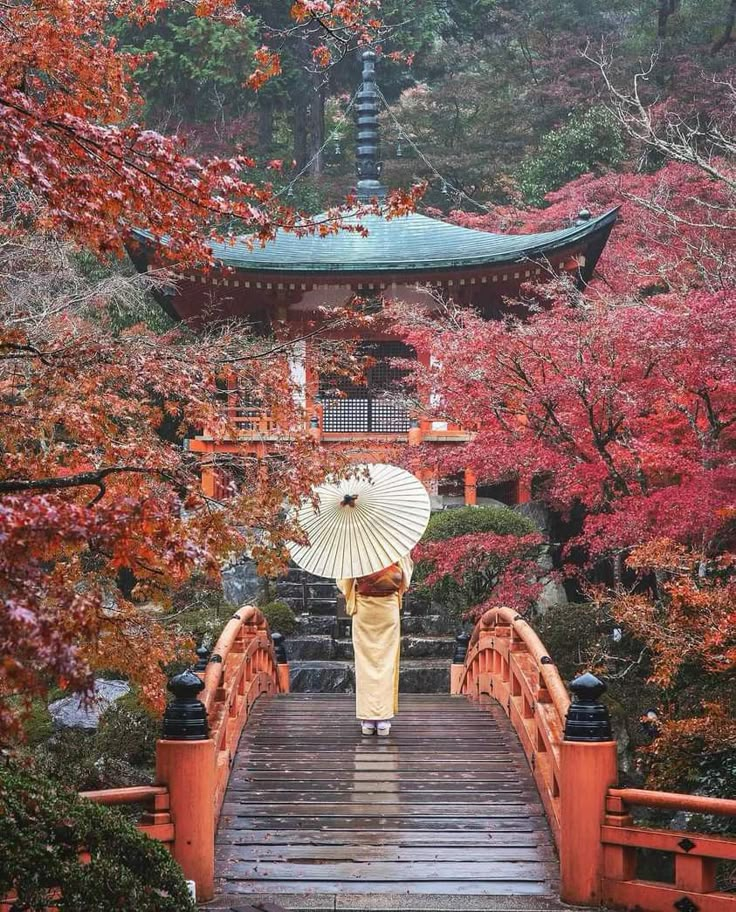

While nearly every corner of Japan boasts beautiful autumn leaves, certain regions and specific spots are renowned for their spectacular koyo displays and associated festivals. Let’s embark on a virtual tour to discover some of the best places to chase crimson.
Kyoto: The Quintessential Autumn Experience
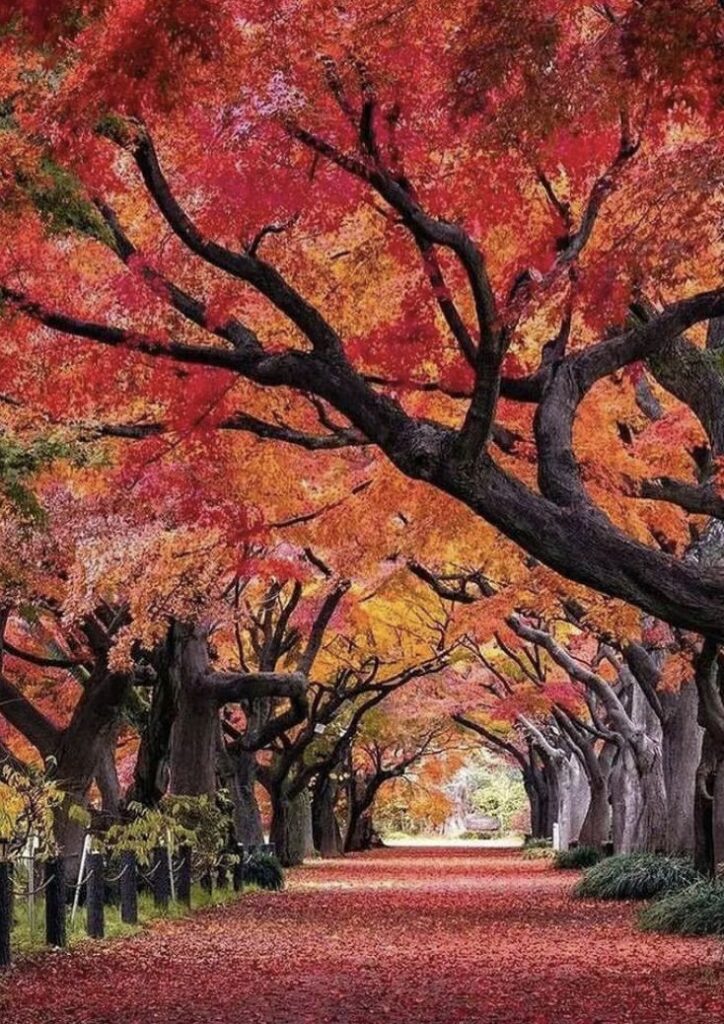
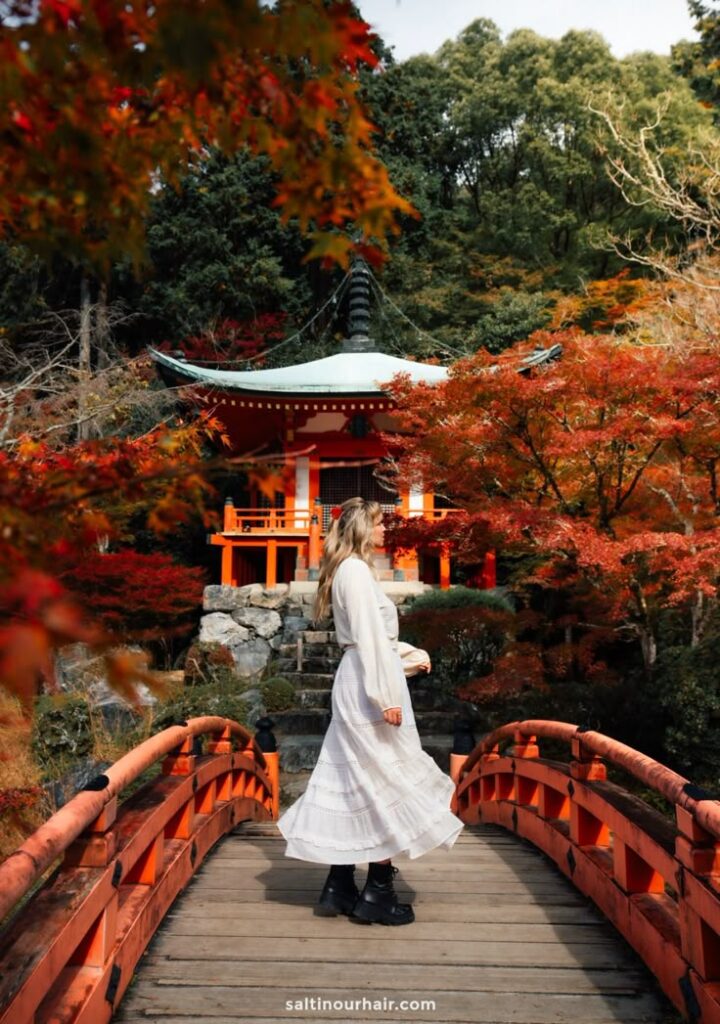
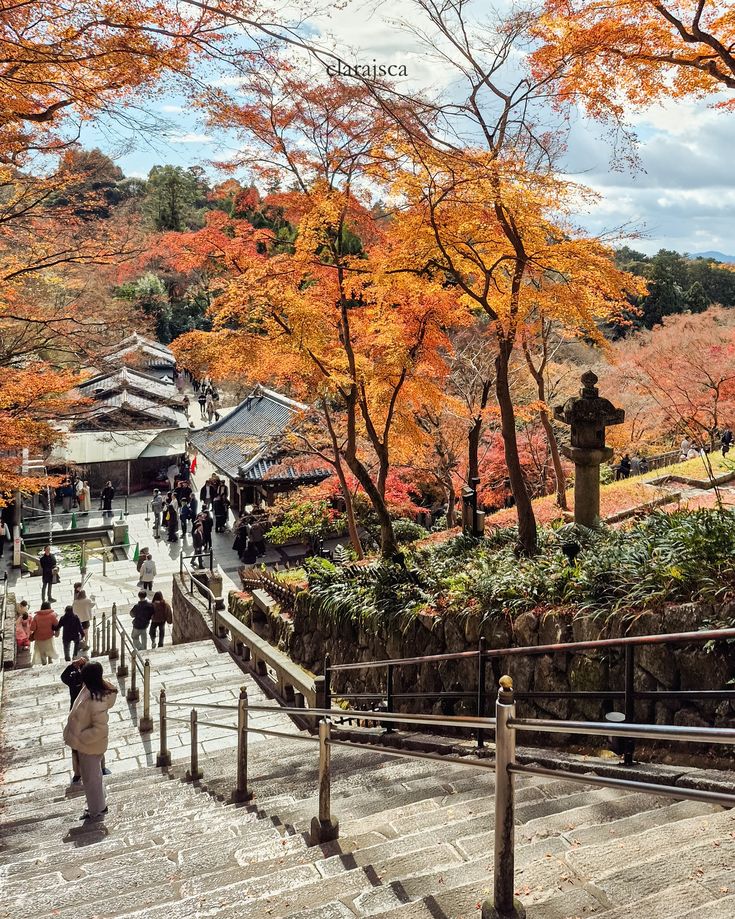
Kyoto, the ancient capital, is arguably the most famous and sought-after destination for autumn leaves. Its countless temples, traditional gardens, and historic wooden structures provide an unparalleled backdrop for the fiery momiji. Be warned: it’s popular for a reason, so expect crowds, but the beauty is absolutely worth it.
- Arashiyama: This scenic district on the western outskirts of Kyoto is breathtaking in autumn. The iconic Togetsukyo Bridge spans the Hozugawa River, framed by mountainsides ablaze with color. Explore the famous Bamboo Grove, which contrasts wonderfully with the reds and golds. Nearby, Tenryu-ji Temple, a UNESCO World Heritage site, boasts a magnificent garden that is stunning during koyo. You can also take a picturesque boat ride down the Hozugawa for a unique perspective of the autumn splendor.
- Tofuku-ji Temple: This Zen temple is arguably Kyoto’s most celebrated koyo spot. Its Tsutenkyo Bridge offers panoramic views over a valley of maple trees that seem to erupt in a fiery blaze. The sheer density of maples here creates an overwhelming spectacle of color. Get there early to avoid the thickest crowds, or be prepared to share the view with many appreciative onlookers.
- Kiyomizu-dera Temple: Another UNESCO site, this iconic temple with its famous wooden stage jutting out from the hillside provides a spectacular vista of Kyoto city, surrounded by a sea of autumn colors. The evening illuminations here are particularly magical, with the temple itself and the surrounding trees bathed in dramatic light.
- Eikan-do Zenrin-ji: Known affectionately as “Eikan-do of the Maples,” this temple is a true gem for autumn viewing. Its sprawling gardens and diverse maple trees create a mesmerizing display of colors. The path leading up to the Tahoto Pagoda is especially beautiful, and its night illuminations are among the best in Kyoto.
- Kodai-ji Temple: Nestled in the Higashiyama district, Kodai-ji offers exquisite gardens that combine traditional landscape design with a touch of Zen tranquility. Its bamboo grove and reflective pond beautifully frame the autumn leaves, and it’s another prime location for stunning evening illuminations, often featuring projection mapping.
Tokyo & Surrounds: Urban Oases and Day Trips
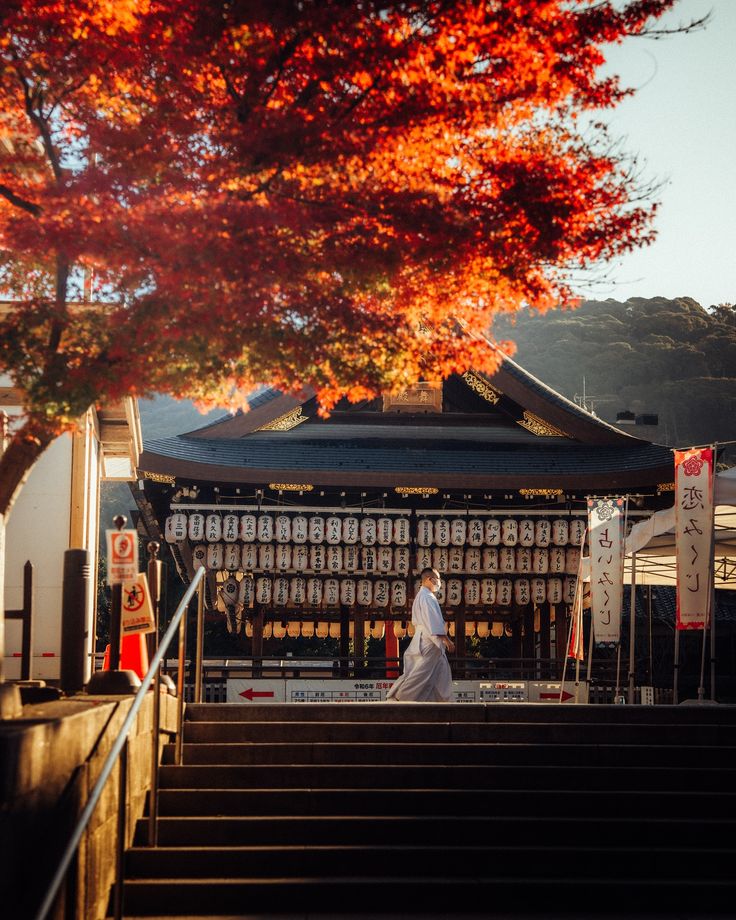
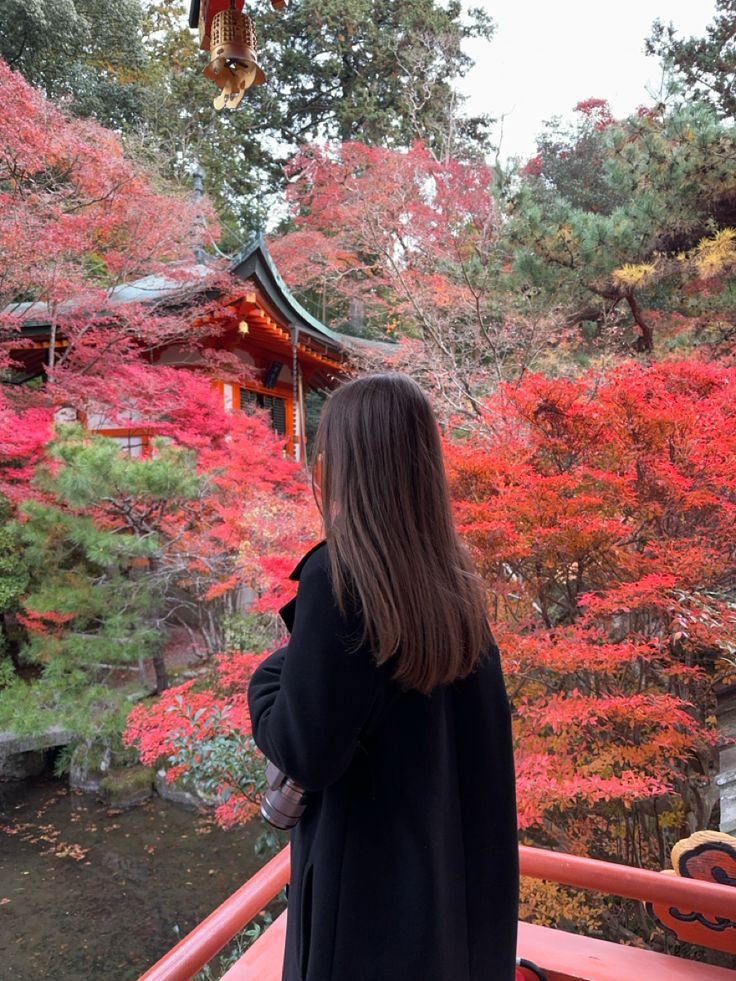
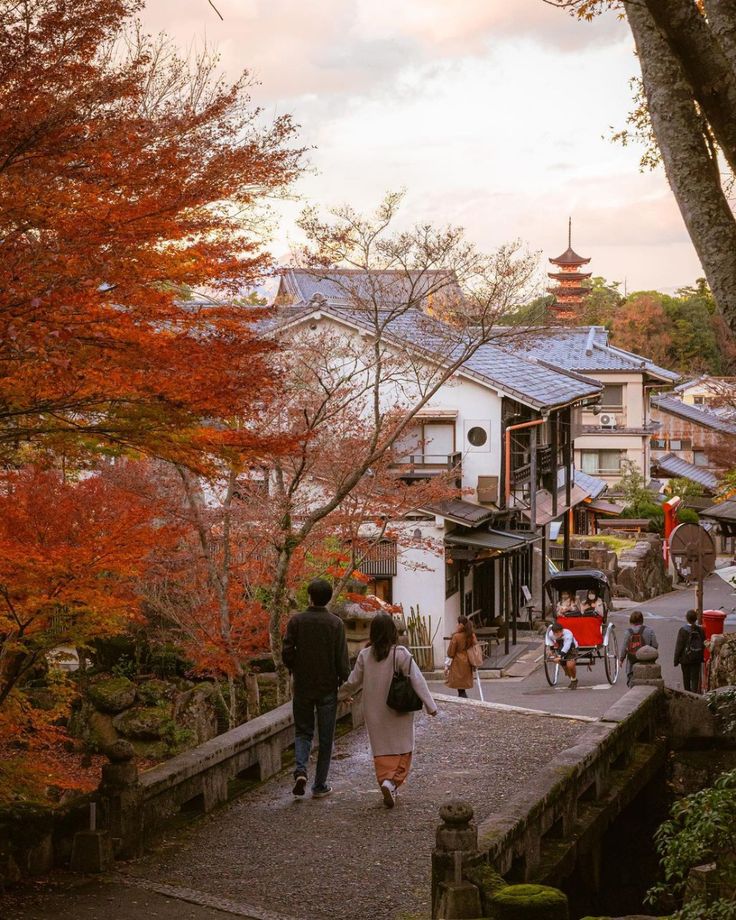
Even Japan’s bustling capital offers numerous spots to enjoy the autumn leaves, and its excellent transportation links mean beautiful day trips are easily accessible.
- Meiji Jingu Gaien (Ginkgo Avenue): While technically icho (ginkgo) leaves rather than momiji, this iconic avenue of ginkgo trees is a golden spectacle not to be missed. The trees turn a brilliant yellow, forming a majestic tunnel that feels distinctly different from the fiery reds of maples but is equally stunning. A popular ginkgo festival usually accompanies the peak viewing period.
- Rikugien Garden: A traditional Japanese landscape garden, Rikugien is considered one of Tokyo’s most beautiful and offers spectacular autumn colors. Designed in the Edo period, its meticulously crafted ponds, hills, and tea houses are perfectly complemented by the vivid maple leaves. It’s another excellent spot for evening illuminations.
- Shinjuku Gyoen National Garden: This expansive park combines Japanese, English, and French garden styles, offering a diverse array of autumn foliage. It’s a peaceful escape from the urban hustle, with plenty of space to stroll and enjoy the reds, yellows, and oranges.
- Nikko: A fantastic day trip from Tokyo, Nikko is a UNESCO World Heritage site famous for its elaborate shrines and temples, set amidst stunning natural beauty. The autumn leaves here usually peak earlier than in Tokyo (late October to early November). The vibrant colors around Toshogu Shrine, the sacred bridge, and especially around Kegon Falls and Lake Chuzenji are truly magnificent.
- Hakone: Easily accessible from Tokyo, Hakone offers a delightful combination of autumn leaves, hot springs (onsen), and views of Mount Fuji. Take a scenic cruise on Lake Ashi to see the colorful mountainsides, or visit the Hakone Open-Air Museum where art and nature blend beautifully with the autumn palette.
Central Japan: Alps and Ancient Trails
Venturing into Central Japan brings you to more rugged landscapes and traditional villages, where autumn colors take on a different, often more dramatic, character.
- Shirakawa-go: This UNESCO World Heritage village is famous for its unique gassho-zukuri (thatched-roof) farmhouses. In autumn, the surrounding mountains burst into a riot of color, creating a fairytale-like backdrop for these picturesque dwellings. It’s an incredible photo opportunity and a chance to experience traditional rural Japan.
- Takayama: Known for its beautifully preserved old town, Takayama offers a charming setting for autumn viewing. Stroll through the historic streets, visit the morning markets, and enjoy the local Hida beef, all against a backdrop of colorful trees. The nearby Hida Folk Village also provides excellent autumn scenery.
- Korankei Valley (Aichi Prefecture): Perhaps one of the most stunning koyo spots in Central Japan, Korankei is particularly famous for its maple tunnel and the gorgeous reflection of colors in the Tomoe River. The annual Korankei Maple Festival draws huge crowds, especially for its spectacular night illuminations, which light up around 4,000 maple trees. It’s an unforgettable spectacle, usually peaking in mid to late November.
Northern Japan (Tohoku/Hokkaido): Early Birds Get the Worm
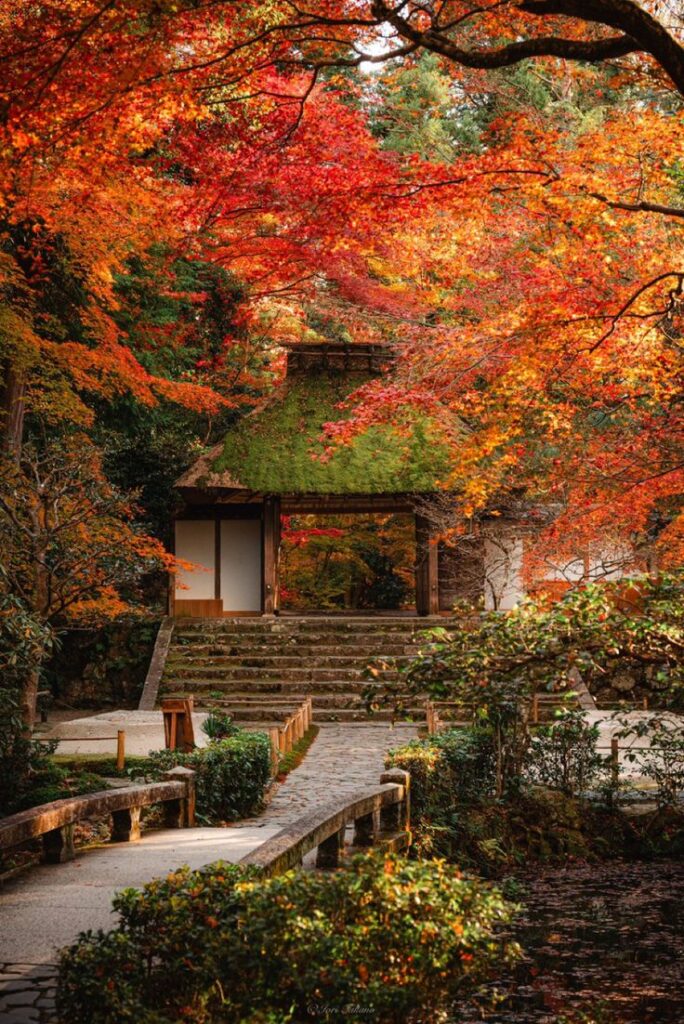


For those who want to kick off their autumn adventure early, Northern Japan offers some of the first and most breathtaking displays.
- Hokkaido (Daisetsuzan National Park): Japan’s largest national park is home to some of the country’s earliest koyo, often starting in late September. The alpine scenery here, with its volcanic peaks and vast wilderness, transforms into a glorious tapestry of reds, oranges, and yellows. Hiking trails offer immersive experiences within this stunning landscape.
- Tohoku (Lake Towada & Oirase Stream): The Tohoku region is a hidden gem for autumn colors. Lake Towada, a caldera lake, is surrounded by dense forests that turn vibrant in October. The nearby Oirase Stream is particularly famous for its picturesque walking trail that meanders alongside crystal-clear water, waterfalls, and an explosion of autumn leaves. It’s a truly enchanting place to immerse yourself in nature’s autumn artistry.
Western Japan: Lesser-Known Gems
While less crowded than Kyoto, Western Japan still offers some spectacular koyo spots that are well worth exploring.
- Miyajima (Itsukushima Shrine): Just a short ferry ride from Hiroshima, Miyajima is famous for its “floating” torii gate. In autumn, the island’s many maple trees, particularly around Momijidani Park, turn brilliant shades of red, providing a stunning contrast to the blue waters and the iconic shrine. It’s a magical place, especially during sunset.
- Osaka (Minoo Park): A popular day trip from Osaka city, Minoo Park is a natural forested valley known for its beautiful waterfall and, of course, its autumn leaves. You can enjoy a pleasant hike along the river, admiring the momiji and sampling local autumn treats like momiji tempura (deep-fried maple leaves).
Planning Your Koyo Adventure: Tips and Tricks
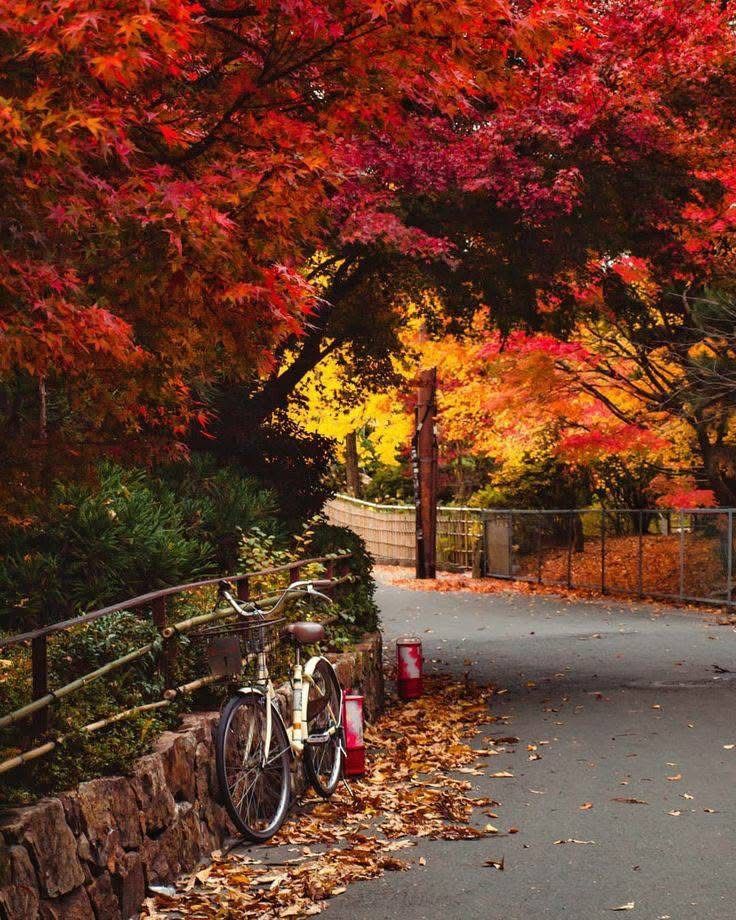

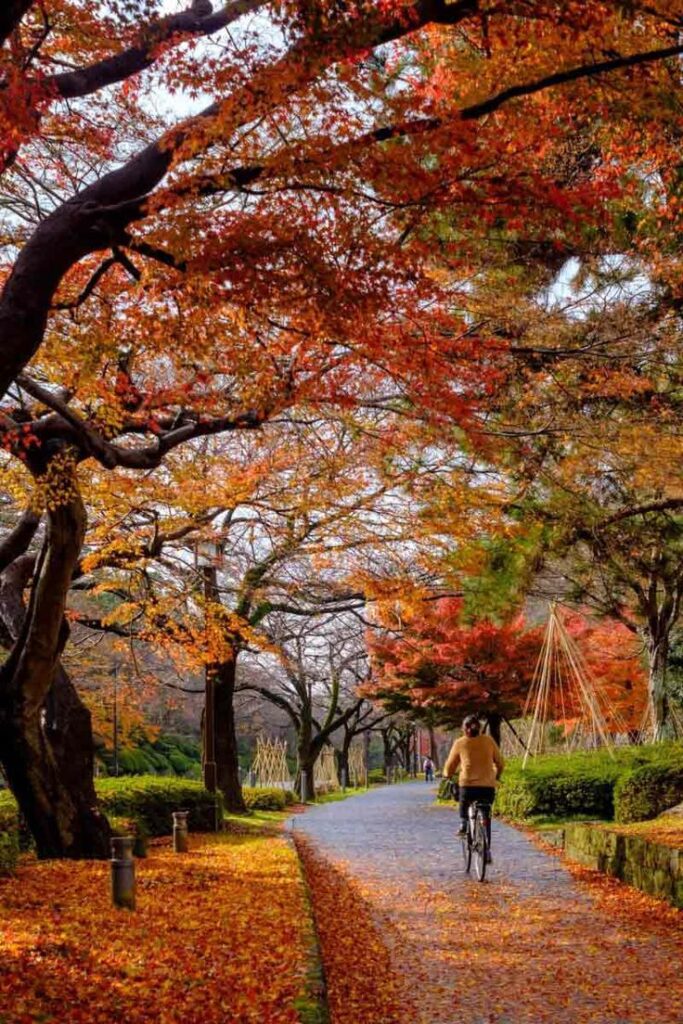
A trip to Japan for koyo season requires a bit of planning, especially if you want to hit peak color and navigate the crowds effectively. Here are some tips to help you on your crimson quest.
When to Go: Understanding the “Koyo Front”
As mentioned, the autumn leaves don’t change color all at once across Japan. The “koyo front” is like a wave, starting in the north (Hokkaido) in late September, moving down to Tohoku in mid-October, through Central Japan in early to mid-November, and reaching Kyoto and Tokyo in mid-November to early December. Alpine areas and higher elevations tend to change earlier than coastal or lowland areas.
- Stay updated: Check official Japanese tourism websites (like JNTO) or dedicated koyo forecast sites (which pop up seasonally) for the latest predictions. These forecasts are usually quite accurate and are updated regularly.
- Flexibility is key: If your schedule allows, try to build a little flexibility into your itinerary. If a particular region’s colors are peaking earlier or later than expected, you might be able to adjust your plans slightly.
Where to Stay: Booking in Advance
Autumn is a popular tourist season in Japan, especially in major koyo hotspots like Kyoto.
- Book early: Accommodation, particularly traditional ryokan (Japanese inns) and popular hotels, can get fully booked months in advance. Start looking and reserving as soon as your travel dates are set.
- Consider alternatives: If you’re struggling to find lodging in prime areas, look slightly outside the main tourist zones. Japan’s excellent public transport means you can often stay a bit further out and still easily reach your desired destinations.
- Explore different types: From budget-friendly business hotels to luxurious ryokan with private onsen and stunning views, Japan offers a range of options. Staying in a ryokan in an autumn leaf-viewing area can be an unforgettable experience.
Getting Around: Japan Rail Pass and Local Transport
Japan’s public transportation system is world-class, making it incredibly easy to travel around, even during peak season.
- JR Pass: If you plan on traveling extensively between different regions, a Japan Rail Pass can be a cost-effective option. Make sure to do the math to see if it’s worthwhile for your specific itinerary. You’ll need to purchase this before you arrive in Japan.
- Local transport: Within cities, trains and buses are efficient and punctual. Google Maps is your best friend for navigating routes, times, and platform numbers.
- Walking: Many of the best koyo spots, especially temple gardens and parks, are best explored on foot. Wear comfortable shoes!
What to Pack: Layers and Camera Gear
Autumn weather in Japan can vary, so packing smart is essential.
- Layers: Days can be mild, but mornings and evenings can get chilly, especially in higher elevations or when attending night illuminations. Pack sweaters, light jackets, and scarves that you can easily add or remove.
- Comfortable shoes: You’ll be doing a lot of walking, so sturdy, comfortable shoes are a must.
- Rain gear: Autumn can sometimes bring rain, so a compact umbrella or a light rain jacket is a good idea.
- Camera essentials: Don’t forget your camera (or smartphone), extra batteries, and plenty of memory space! A tripod can be useful for night illuminations.
Etiquette: Respecting Nature and Local Customs
Japanese culture emphasizes respect and harmony, especially with nature.
- Stay on paths: Do not venture off designated paths or climb on trees.
- No littering: Always carry your trash until you find a designated bin (which can sometimes be sparse, so consider carrying a small bag for your trash).
- Be mindful of others: Especially in crowded spots, be aware of your surroundings and avoid blocking pathways or views for extended periods.
Avoiding the Crowds (or at least managing them)
Autumn koyo is a huge draw, and some popular spots can get incredibly busy.
- Go on weekdays: If possible, visit major attractions during the week rather than on weekends.
- Early bird or late owl: Arrive at popular spots right when they open (or even before) or visit closer to closing time. Many places offer morning and evening illuminations, which can spread out the crowds.
- Seek out hidden gems: While the famous spots are popular for a reason, Japan has countless beautiful lesser-known parks, temples, and hiking trails that offer stunning koyo without the throngs of people. A bit of research into local prefectural tourism sites can reveal these treasures.
- Patience: Sometimes, you just have to embrace the crowds. Take it as part of the authentic Japanese festival experience, and try to enjoy the vibrant atmosphere.
Beyond the Leaves: Other Autumn Delights
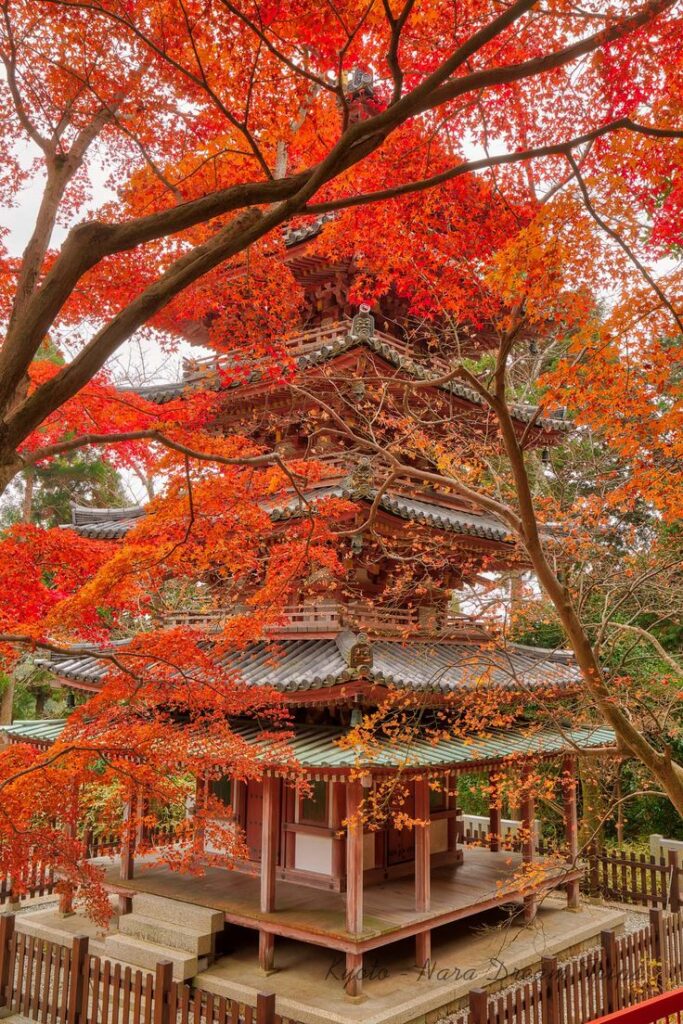
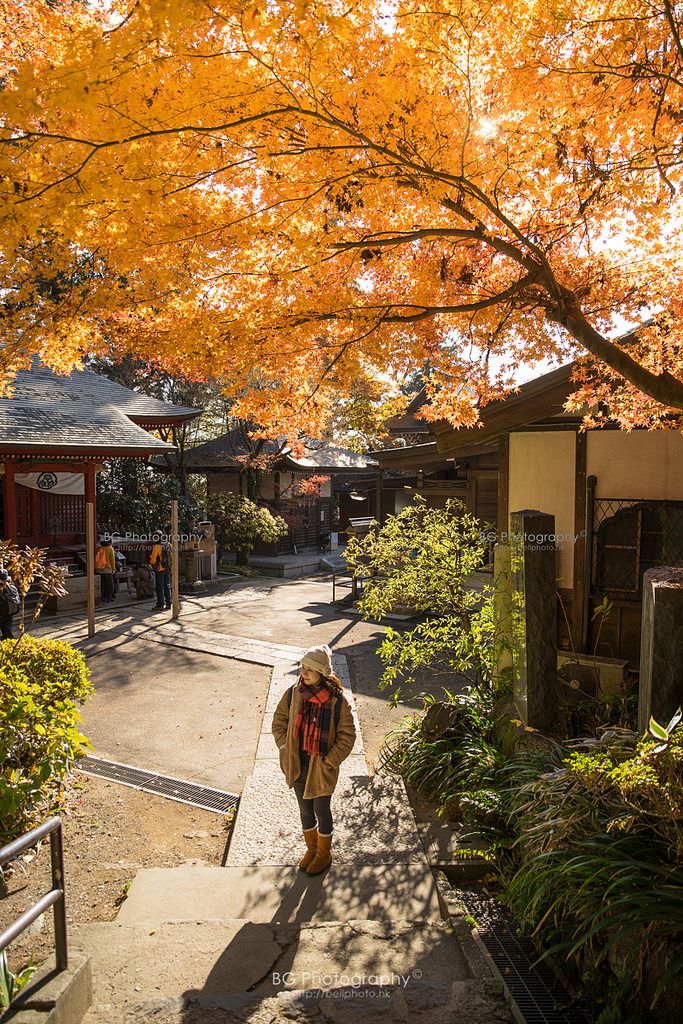
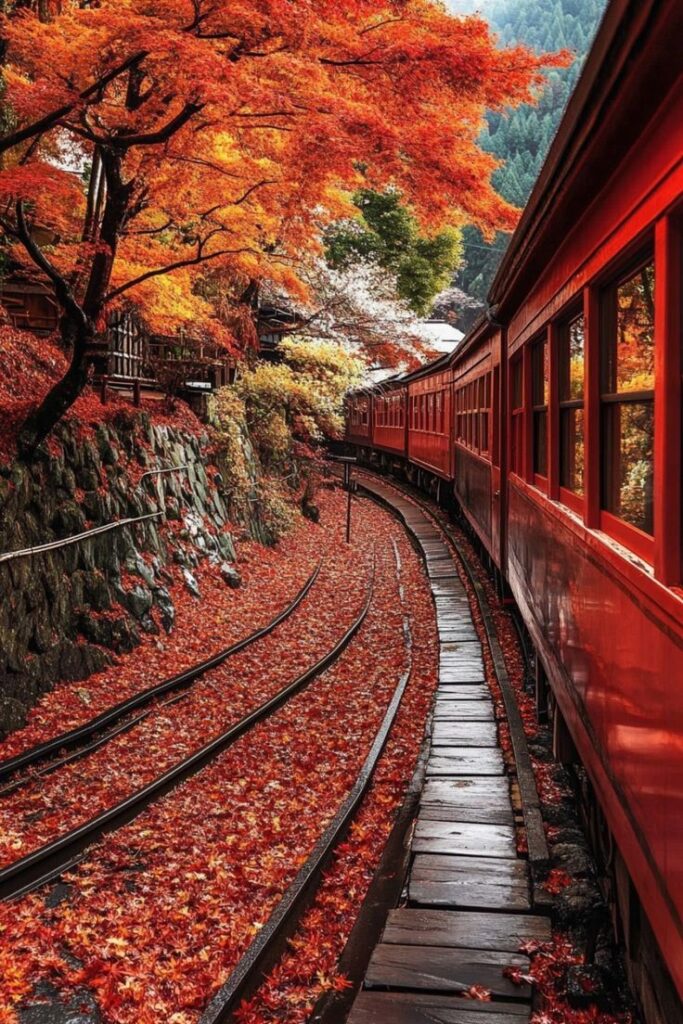
While momiji are the undisputed stars of the show, autumn in Japan offers a rich tapestry of experiences that extend beyond leaf-peeping. Combining these with your crimson quest will create an even more memorable trip.
- Harvest Festivals: Autumn is harvest season, and many rural towns celebrate with local festivals (akimatsuri). These often feature traditional parades, music, and food, celebrating bountiful yields of rice, fruits, and vegetables. They offer a fantastic glimpse into local life and traditions.
- Seasonal Foods: Japanese cuisine celebrates seasonality like no other, and autumn brings a host of delicious ingredients. Besides the sweet potatoes and chestnuts mentioned earlier, look out for matsutake mushrooms (a highly prized delicacy), sanma (Pacific saury, often grilled), persimmons (kaki), and various root vegetables. Don’t miss nabe (hot pot) dishes, which are perfect for warming up on a crisp autumn evening.
- Onsen (Hot Springs) with Autumn Views: Imagine soaking in a relaxing outdoor hot spring bath, surrounded by mountains ablaze with autumn colors. This is a quintessential Japanese experience. Many onsen towns, especially in mountainous regions like Hakone, Nikko, or Hokkaido, offer spectacular koyo views directly from their baths, providing ultimate relaxation and natural beauty.
- Hiking Opportunities: With cooler temperatures and stunning scenery, autumn is an ideal time for hiking. From gentle strolls along river paths to more challenging mountain treks, Japan offers countless trails that take you deep into forests transformed by koyo. National parks and nature reserves across the country provide well-maintained routes suitable for various fitness levels, allowing for an immersive experience amidst the fiery foliage.
Making the Most of Your Momiji Moments
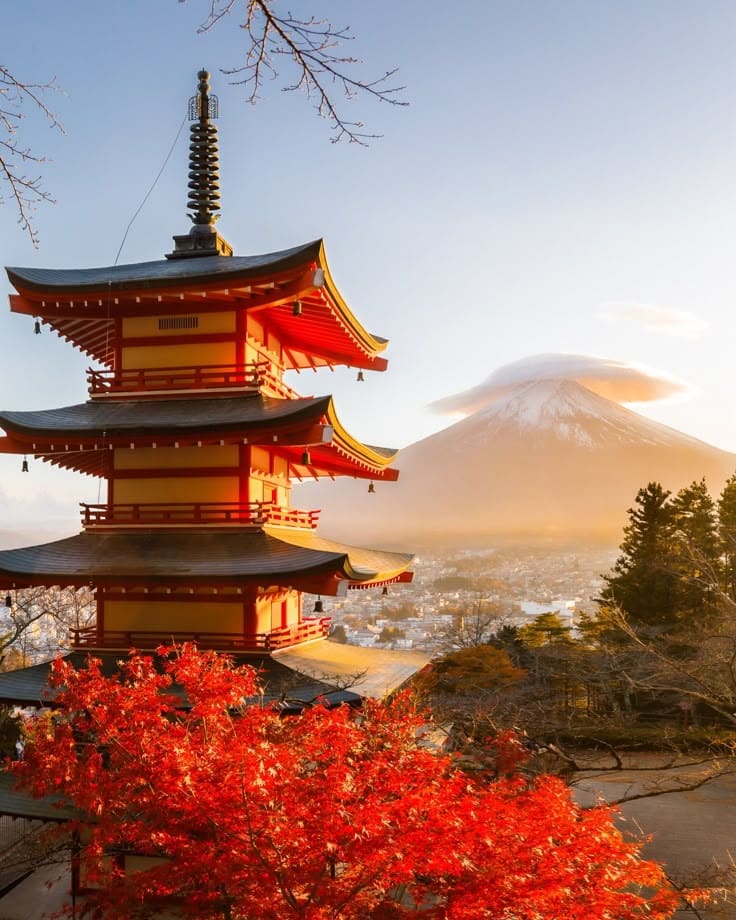
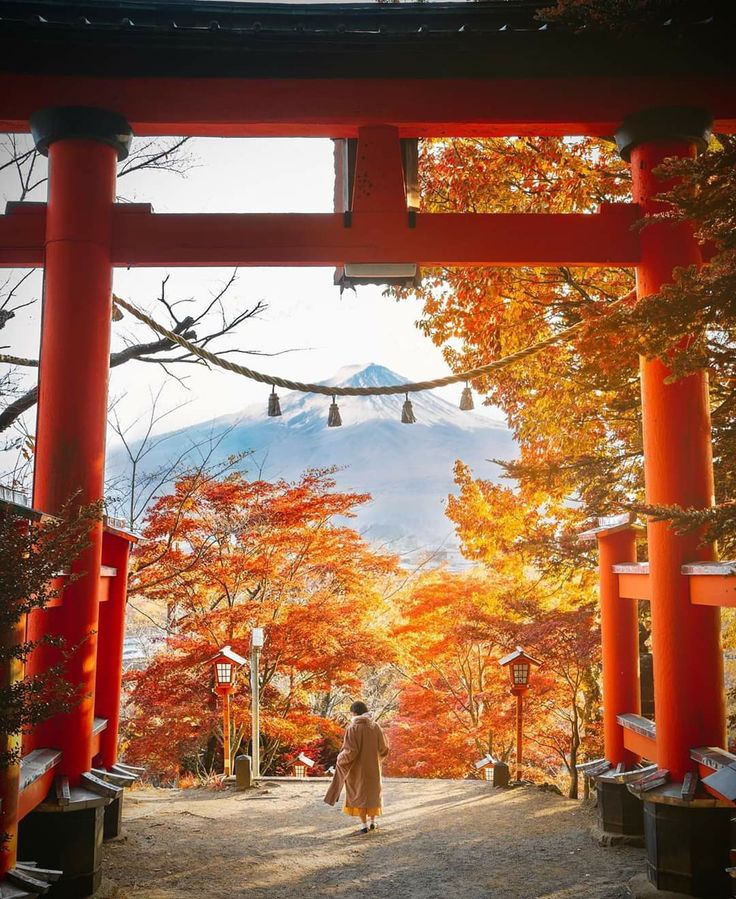

To truly savor your koyo adventure, here are a few final tips for bringing home memories and making the most of every moment.
- Photography Tips: Capture the magic! Early morning light or the “golden hour” before sunset often provides the best natural light. Look for reflections in ponds or rivers, use leading lines (like paths or bridges), and don’t forget to include people in your shots to convey scale and emotion. Experiment with macro shots of individual leaves. For night illuminations, a tripod will be your best friend to avoid blurry photos. And remember, sometimes the best photo is the one you take with your mind, fully present in the moment.
- Mindfulness and Appreciating the Moment: While it’s tempting to rush from one famous spot to another, take time to simply sit and absorb the beauty. Find a quiet bench in a garden, sip some green tea, and let the colors wash over you. The Japanese concept of wabi-sabi – finding beauty in imperfection and transience – is particularly relevant during koyo. Embrace the fleeting nature of this spectacular season.
- Souvenirs: Beyond the usual trinkets, consider unique autumn-themed souvenirs. Local crafts, specialized regional snacks (like momiji manju from Kyoto or momiji tempura from Minoo), or even beautifully designed stationery featuring maple leaves can be wonderful reminders of your trip. Local markets, particularly those at festivals, are great places to find these distinctive items.
Conclusion
Chasing crimson in Japan is more than just a trip; it’s an immersion into a natural masterpiece, a cultural celebration, and an experience that will undoubtedly leave you breathless. From the serene temple gardens of Kyoto glowing under evening illuminations to the majestic mountainsides of Hokkaido bursting into early autumn splendor, Japan’s autumn maple festivals offer something for every traveler. It’s a symphony of color, a feast for the senses, and a testament to the profound beauty of nature.
So, if you’re yearning for an adventure that combines breathtaking landscapes with rich cultural experiences, start planning your autumn escape to Japan. Pack your layers, charge your camera, and prepare to be enchanted. Go ahead, dive into the fiery reds, brilliant oranges, and golden yellows. Let the crisp autumn air invigorate you, and the magic of koyo capture your heart. Your casual guide to Japan’s autumn maple festivals is complete, and your unforgettable crimson quest awaits!


